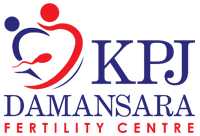Ovulation Induction
WHAT IS NORMAL OVULATION
In a normal unstimulated menstrual cycle, around 5 to 15 primordial follicles will be recruited and stimulated to grow. However, only one of the follicles will eventually become the dominant and develop into Graafian follicle.
While the dominant follicle develops into Graafian follicle, it will suppress the growth of other follicles and subsequently causing them to degenerate. Thus, during a normal menstrual cycle only one egg will become fully mature Graafian follicle. When the maturing Graafian follicle reaches 18 mm in size, there will be a rise of LH hormone release and triggers ovulation at mid-cycle.
WHAT IS OVULATION INDUCTION?
Ovulation induction involves the use of medications to stimulate the development of one or more mature follicles in a woman’s ovaries. Women that have irregular cycles or anovulation (do not ovulate) may be treated by this means as these women do not regularly develop mature follicles themselves
Pelvic ultrasound scans are used to access the endometrium (lining of the womb) and to determine how the follicles are developing.
Ovulation induction cycles are followed by a hCG injection to induce ovulation once the dominant follicle is 18mm. Timed sexual intercourse can then take place or Intrauterine Insemination is done.
The side effects involved in ovulation induction include mild bloating, lower abdominal discomfort, headaches and fatigue. Careful monitoring removes the risk of multiple births by advising the patient to abstain from sexual intercourse where indicated.
“FALL SEVEN TIMES AND STAND UP EIGHT.”
The Region’s Leader
FOR WHOM IT IS RECOMMENDED
Ovulation induction treatment is recommended for:
1. Women with unexplained infertility.
2. Women with long, irregular cycles.
3. Women who are not spontaneously ovulating.
4. Couples with no male-factor infertility.
Ovulation induction treatment is not recommended for:
1. Women over 35 years of age.
2. Women with tubal blockage or severe tubal damage.
3. Women with severe endometriosis.
4. Couples with a low sperm count or poor /morphology.
